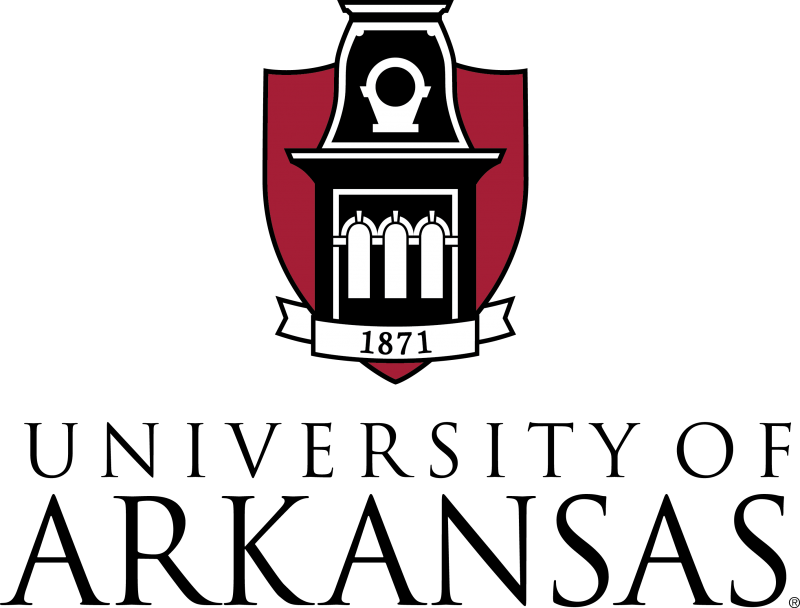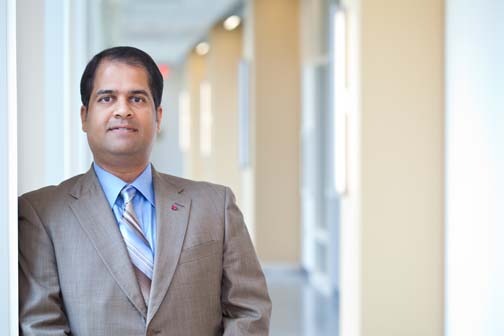Beginnings
In the early nineties, Ajay P. Malshe had a good life in India. “I had everything there,” he said. “A nice house, a job at a premier university, a happy family.” But Malshe wanted more than that. He had ideas about new materials and technologies, and at that time, India did not yet have the right economic climate for him to explore his ideas and take them to market. The best place, he thought, was the United States, so he moved his family here to start a materials business.
That didn’t happen overnight. Malshe, who had been a professor in India, was a visiting scholar at Ohio State University, then moved to Arkansas to work in the U of A’s High Density Electronics Center. In 1995, he accepted a job at the U of A as a tenure-track professor teaching materials science and mechanical engineering. In this position, he found the freedom to work on his ideas, and he discovered a love of teaching. For several years, Malshe divided his time between teaching and research, developing his ideas through traditional academic methods, like publications and patents, as well as working closely with industry.
But Malshe didn’t forget about his dream of starting a business. A turning point for him occurred in the late nineties, when the NSF program director came to the university to talk about the Small Business Innovation Research program. “In the whole conference room, there were three people,” he remembered. In the region at that time, the idea of combining academic research with business probably sounded strange. But for Malshe, it was an inspiration. His thoughts began to turn back to the materials business he had dreamed about a decade ago.
At the same time, entrepreneur Jim Phillips was exploring new concepts that many people thought were absurd. Like instant messaging. His company, Skytel, was developing technology that would allow people to send written messages back and forth, rather than talking on the phone. “The whole world looked at me and said ‘No one is going to want that’,” Phillips said.
These days, the concept of instant and text messaging seems obvious. After all, the basic elements of this technology already existed: pagers, cell phones and email were mainstream products at the time. Phillips recognized that instant messaging was in what he called a “technology sweet spot”—a new technology that works with existing platforms, but makes a huge impact on those platforms, changing them forever. After MCI bought Skytel for 2.85 billion dollars, Phillips was on the lookout for the next sweet spot.
In 1997, Malshe and some of his colleagues designed a new nanomaterial on a paper napkin. “Nanotechnology was not a buzz word then,” he explained, but Malshe was already working on what he called “miniaturized systems.” One day, he received a call from a tool company in Michigan that was looking for a thin film or coating that would extend the life of their cutting tool products.
In two days, Malshe designed a nano-sized composite version of a material called cubic boron nitride. In a week, he had a contract with the Michigan company to develop the new technology. Working with other professors, post-doctoral fellows and students in the College of Engineering, Malshe created a method to bind this super-hard material to the surface of cutting tools, extending their life and increasing their productivity significantly. This coating would eventually become NanoMech’s first product platform.
Phillips became interested in nanotechnology when he sat on a board of a technology company with author Michael Chrichton and heard him talk about the tiny particles he was researching for a book. Phillips recognized that the shift from micro to nanotechnology could have an impact similar to the shift from analog to digital. “Everything changed overnight,” Phillips said of digital technology. “It changed industries. Companies came and went. I think the same revolution is happening right now in nanotechnology.”
The Meeting of the Minds
Malshe founded Arkansas’ first nano-manufacturing company in 2002. Phillips heard about Malshe’s innovations, and traveled to Fayetteville to meet Malshe and learn more about Nanomech. He was impressed by the fact that Malshe had designed and patented a product that, like text messaging, builds on an existing market. Phillips recognized that Malshe’s cBN coating “would be in effect a plug-in that could change the entire industry.” And Phillips could see that Malshe had the qualities he looked for in an engineer. “He brought immense technological prowess in his field of endeavor,” Phillips said, and he explained that Malshe had the right qualities for success: “prowess and the ability to communicate.”
Phillips’ business acumen helped Malshe get his products moving toward commercialization, and he accepted Malshe’s offer to become CEO. Malshe’s cBN coating, now called TuffTek, is on the market now, along with the company’s second product platform, nGlide. When added to oils, greases or coatings, nGlide, a macro molecular lubricant, increases their performance by 30 to 50 percent. In addition to being a useful plug-in for the lubricant industry, nGlide, which extends the life of fossil fuel-based lubricants and increases the durability of mechanical parts without the use of toxic chemicals, is also an environmentally sustainable product.
Two more NanoMech product platforms are still in the early stages of productization. NGuard, a a nano-materials product, has military applications, preventing the growth of fungus and bacteria on the gear of soldiers in the field, and can be used as an additive to recycled wood-polymer composite to prevent fading. The Element-X platform includes a range of nano-metal powders. Using the unique properties of nano-sized elements like copper, aluminum, selenium, indium and others, Element-X can transform materials like cosmetics, electronic ink, fuel and fertilizers.
Malshe and Phillips agree that the success of NanoMech would not have been possible without the University of Arkansas. Phillips explained that one of the things that attracted him to Arkansas was the university’s strong engineering program and commitment to investments like the new Institute for Nanoscience and Engineering.
“When you look at the success of Silicon Valley and the Research Triangle, it’s undergirded by a strong technology investment,” Phillips said. “Here, the College of Engineering and Fulbright College of Arts and Sciences have a very strong material science group.” The Institute for Nanoscience and Engineering, he explained “will attract scientists and engineers in a way that it will provide what Silicon Valley and Research Triangle have: human intellectual capital that can assist companies that are growing in the area of nanotechnology.”
“Today’s universities are the knowledge creators,” said Malshe, who values his position as a professor and entrepreneur, a vocation he has termed “profeneur.” In this role, Malshe is able to create new technology and new jobs through his company, exchange ideas with other researchers and business leaders, and use his teaching skills to inspire the next generation of engineering innovators.
“When I came to this country, NanoMech was my dream,” said Malshe. “I was blessed to add to that dream the ability to take that knowledge to the classroom.”
Developing and commercializing a product takes time. Phillips explained that NanoMech’s decade of research and development is an asset to the company. “This is ten years of research and trial and error,” he said. NanoMech has just entered the commercial realm, and Phillips and Malshe hope to keep expanding the market for their products and developing new technologies, as well as new jobs.
Jim Phillips is excited about the future, in which he sees limitless possibilities. In his mind’s eye, NanoMech’s technology could keep getting bigger and better—paint that never fades, airplanes that don’t break when they crash and propulsion systems for hovercraft are just a few of the products he can imagine—as it gets smaller and smaller. “Look up and you can feel infinity,” he said. “You just keep multiplying. For nano, divide by two—that’s also infinite.”
For his part, Ajay Malshe is open-minded and optimistic. “People ask me where I will be ten years from now,” he said. “I have no idea. I don’t even know where I’ll be tomorrow, but the point is this is not a destination, it’s a process, and it is a fun process. I will have many stories to tell my grandkids.”
Editor’s note: an error was corrected in this article on 10/21/11. While Malshe was a visiting scholar at OSU, he did not teach there, as stated in the original article.



